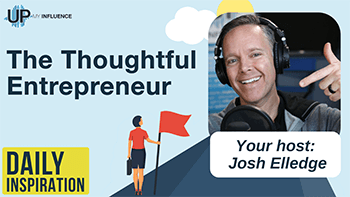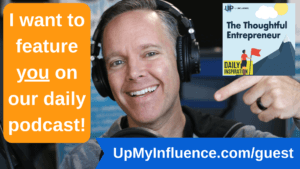In the digital world, the race to get your product or service in front of a buying audience is more complicated than ever due to the infinite number of ways to communicate. To make it even worse, it is nearly impossible – and almost unheard of – to have a completely unique offering in the eyes of your prospective customers. Most entrepreneurs are in a competitive market, where others are trying to sell to the same exact audience. This is why I maintain that the method for getting that exposure is absolutely critical. It is what will set you apart and bring success.
PR vs Advertising
The old-school approach of solely buying advertising to meet all key sales & marketing objectives not only yields minimal success, it can also be a drain on your marketing budget. Years ago, ads were one of the only ways to emerge on the public scene. Today, according to many of your future customers, it’s become one of the least effective. Why?
Two reasons:
1. People hate being “sold to.”
2. Advertising is, in and of itself, stagnant.
You need movement to get people to the point of purchase. This is why large companies spend millions of dollars to produce and distribute advertising that is in some fashion “gab-worthy”. They seek to make a viral commercial or ad that people will talk about, share around the internet, and hopefully land them some discussion and exposure on news outlets. They do this through humor, awkward situations, pushing the social envelope, catchy tunes or phrases, giveaways, and more. Which is all well and good – if you have the budget to spend.
Since you are an entrepreneur, and can’t spend that kind of cash, how do you get noticed? This is where the budget-friendly, effective strategy of publicity comes in. Publicity, as opposed to advertising, is where you get other people to talk about you and your product or service, and, hopefully even invite you to discuss these things in some kind of public format. To get there, you have to become an expert in whatever your passion is and what you are selling. Audiences (particularly millennials) are more cynical than ever, and they are looking for sincerity and authority before buying. You need to thoughtfully craft this authority. As the only one who knows why your product or service is superior, you need to get out there and hustle, every day, to get the word out that you are the real deal. No one else is going to do this for you.
The good news is that there are several proven ways to accomplish this. If you are willing to invest in your publicity or put in the work, day in and day out – these methods will pay off. They will work to gain you publicity – that is, get people talking about you and your offerings – and will lead to you being viewed as an expert; which ultimately results in trust, and trust equals sales.
A few methods to start you off…
Method #1 – Social media.
In particular, Twitter and YouTube work well. These two outlets can serve to get people talking if they are used right. The keys are to be dynamic, genuine, not afraid to be in front of people and to be relevant. I can’t stress that enough. Refrain from flooding social media with meaningless drivel and white noise. This only works against you being viewed as an expert. Every post or video MUST contain something of value to the audience. A useful tip, an insider-view, a compelling snippet of a written work, a video showing some of your talent or expertise, or even a real performance or use of your product. Then you must give permission to be quoted and/or shared, so your quote or video starts circulating. And finally, make sure people can easily contact you so they can engage in conversation with you.
A great example of using YouTube to jump-start a previously low-income, street-performer career is the magician, Steven Brundage. He reaped the rewards of a massive boost when a video of him being pulled over by a cop went viral. Normally an embarrassing situation, one you wouldn’t want public, Steven used it instead. He was caught speeding driving home from a gig at 3 a.m. To explain the late hour and all the playing cards in his car, he tells the cop that he’s a magician. The officer asks to see a trick to prove Steven’s story, and Steven decides to video it. An expert with a Rubik’s Cube, he shows the officer both his fast-solve and his 1-second solve. The video not only resulted in no speeding ticket, it got him millions of YouTube views. The publicity from there skyrocketed. Steven is now a successful, sought-after illusionist, with big-name corporate clients. He has been invited to appear on countless shows, and even was on Penn & Teller’s show “Fool Us”, where he won the challenge.
Following this example, think about your subject matter expertise – and how you could create a video where it intersects with everyday life – where your skills may pay off? If you can amass some views on your video, you should then submit your popular video to websites like Buzzfeed – and other sites that love to share trending content.
Method #2 – Skip the shotgun approach of press releases for now.
Similar to advertising, press releases are like hunting with a shotgun – a scatter approach that may or may not hit anything as you just fire your weapon into the thicket. Move forward with press releases only under close, careful supervision from a trained professional who knows how to generate results. You can blow through a lot of money – or completely waste your time.
With or without expert supervision, I recommend using the laser-rifle approach of publicity. In this regard, you can either be proactive to pitching ideas to specific media contacts – or reactive to a specific journalist’s requests. A good way is to help a reporter out (or HARO). Journalists don’t have the time to become an expert in everything they are asked to cover. Through the website (http://www.helpareporterout.com), and building contacts with local journalists, you can become that contact point in your field. UpMyInfluence.com offers low-cost HARO monitoring – which can save you an hour or more each day if you truly want to maximize this service and get media placements throughout the web, and worldwide publications and broadcast outlets.
By answering the questions of reporters and journalists, you can get yourself quoted by businesses, blogs, and even news agencies, building the critical position of expert. As you help journalists more and more, you’ll build your own contact list of journalists who will want to stay current on trending news in your industry. You’ll be able to alert your contacts to newsworthy happenings in your field, becoming a valuable source for them; one they will turn to again and again. This method is something you should be working as often as possible – even daily. Again, we’ve designed services at UpMyInfluence.com to automate much of the work necessary if you are short on time.
Method #3 – Expand your brand.
This is particularly vital to products or services that are, in and of themselves, somewhat narrow. One prime example is marketing a book. Rather than focusing on driving your book exclusively, focus on selling yourself and your knowledge. As a rule of thumb, it’s much easier to pitch your segment/story idea to your media contacts if you are talking about a watercooler topic – rather than just announcing your new book. If media outlet’s audience hasn’t heard of you – or your book, they won’t really care. They only care about what their immediate needs are, and what other people are already talking about. A good practice to exercise is called ‘news jacking’ – where you design your pitches around trending topics.
Reputable authors also research and have knowledge of what they are writing about, or including in their character personas. Another tactic to get some additional media placements by using that knowledge to gain expert status in those areas. That, in turn, will drive interest in the book itself. By expanding what you have to offer, you can really work Methods 1 and 2.
As a start-up entrepreneur who wants more press, the job is yours to hustle and make this happen. Your other option is to hire a public relations firm – which can be very expensive and in my experience, risky. You could potentially invest $5000 to $10000 and see limited success. Most public relations professionals will also not offer media placement guarantees. So… YMMV.
Your final option is to be smarter about how you tackle your PR efforts. At UpMyInfluence.com, I’m happy to be of service – and teach all I know. Please ask me your questions on a video training – and I’ll share what’s worked for me in creating millions of dollars of free advertising for my own company.
To get an idea of how much does a PR campaign cost, click here.


